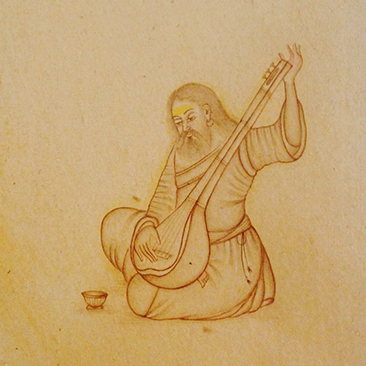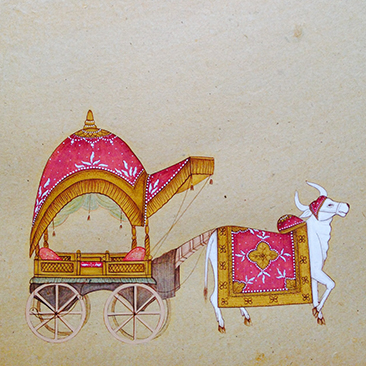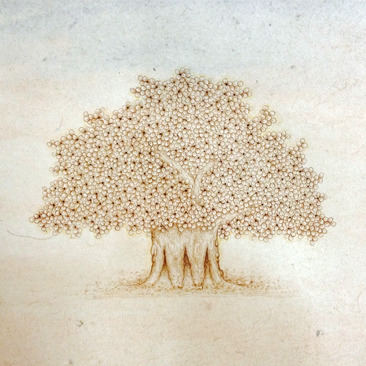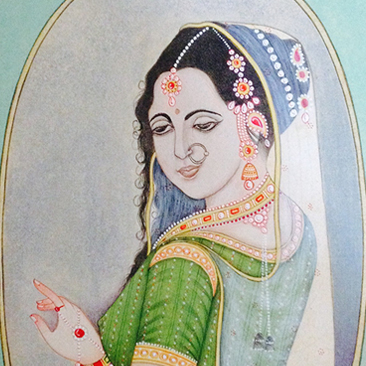Miniature
Miniature art or model art is a genre that focuses on art (especially painting, engraving and sculpture) in much-smaller-than-usual sizes.a piece of miniature art is capable of being held in the palm of the hand, or that it covers less than 100 cm². Miniature art is fine art. Miniature art is a specialty art, not a novelty art. Through the ages it has been considered an art form. Miniature art is most often extremely detailed work, exquisite in color with a strength of composition which can more than compete with larger paintings
Indian Paintings can be broadly classified as murals and miniatures. Murals are large works executed on the walls of solid structures. Miniature paintings are executed on a very small scale for books or albums on perishable material such as paper and cloth.The art of miniature painting reached its glory during the Mughal period. The tradition of miniature paintings was carried forward by the painters of different Rajasthani schools of painting.
The history of Indian murals starts in ancient and early medieval times, from 2nd century BC to 8th – 10th century AD. Mughal painting is a particular style of Indian painting, generally confined to illustrations on the book and done in miniatures, and which emerged, developed and took shape during the period of the Mughal Empire 16th -19th centuries.Mughal paintings were a unique blend of Indian, Persian and Islamic styles. Because the Mughal kings wanted visual records of their deeds as hunters and conquerors, their artists accompanied them on military expeditions or missions of state, or recorded their prowess as animal slayers, or depicted them in the great dynastic ceremonies of marriages.
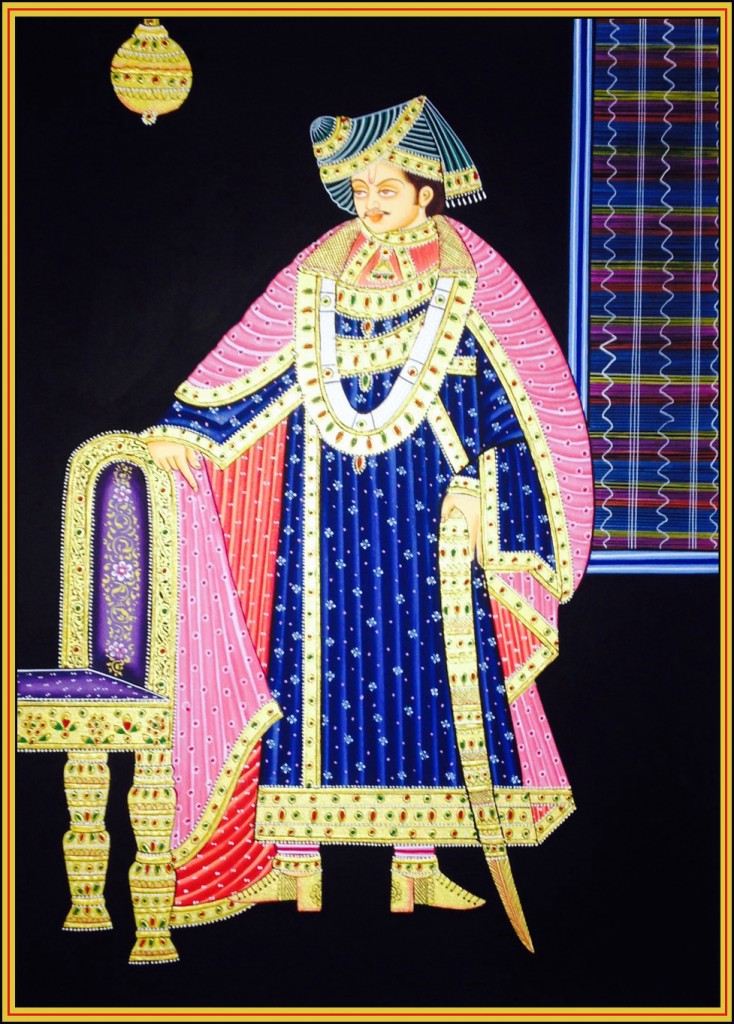
Rajput painting, a style of Indian painting, evolved and flourished, during the 18th century, in the royal courts of Rajputana, India. Each Rajput kingdom evolved a distinct style, but with certain common features. Rajput paintings depict a number of themes, events of epics like the Ramayana and the Mahabharata, Krishna’s life, beautiful landscapes, and humans. Miniatures were the preferred medium of Rajput painting, but several manuscripts also contain Rajput paintings, and paintings were even done on the walls of palaces, inner chambers of the forts, havelies, particularly, the havelis of Shekhawati.
The colorful tradition of Rajasthani people reflects in art of paintings as well. This painting style is called Maru-Gurjar painting. It throws light on the royal heritage of ancient Rajasthan. Under the Royal patronage, various styles of paintings developed, cultivated, and practiced in Rajasthan, and painting styles reached their pinnacle of glory by 15th to 17th centuries. The major painting styles are phad paintings, miniature paintings, kajali paintings, gemstone paintings, etc. There is incredible diversity and imaginative creativity found in Rajasthani paintings.



